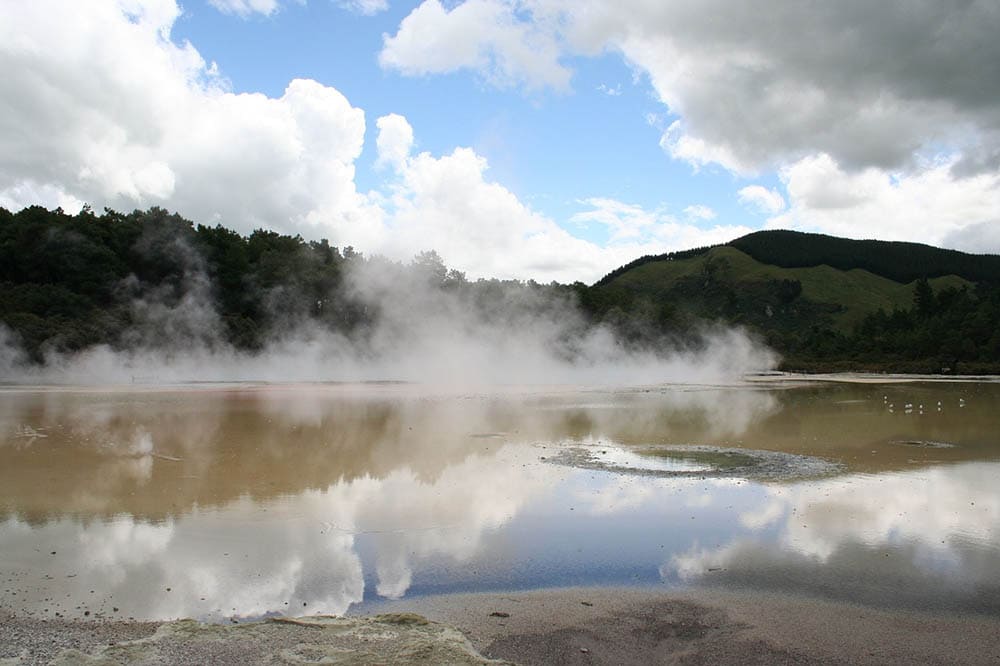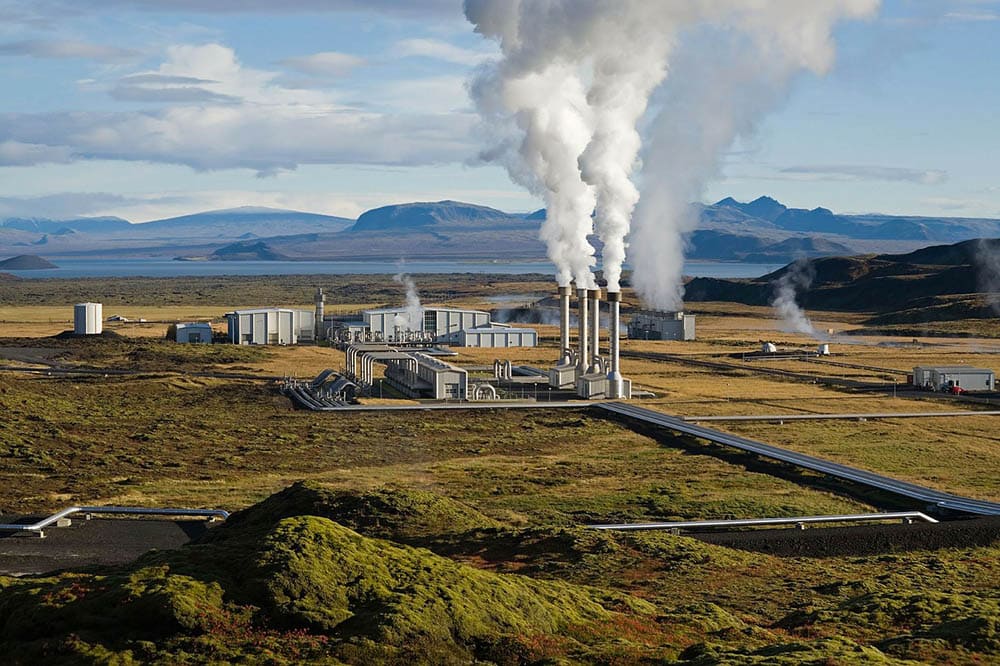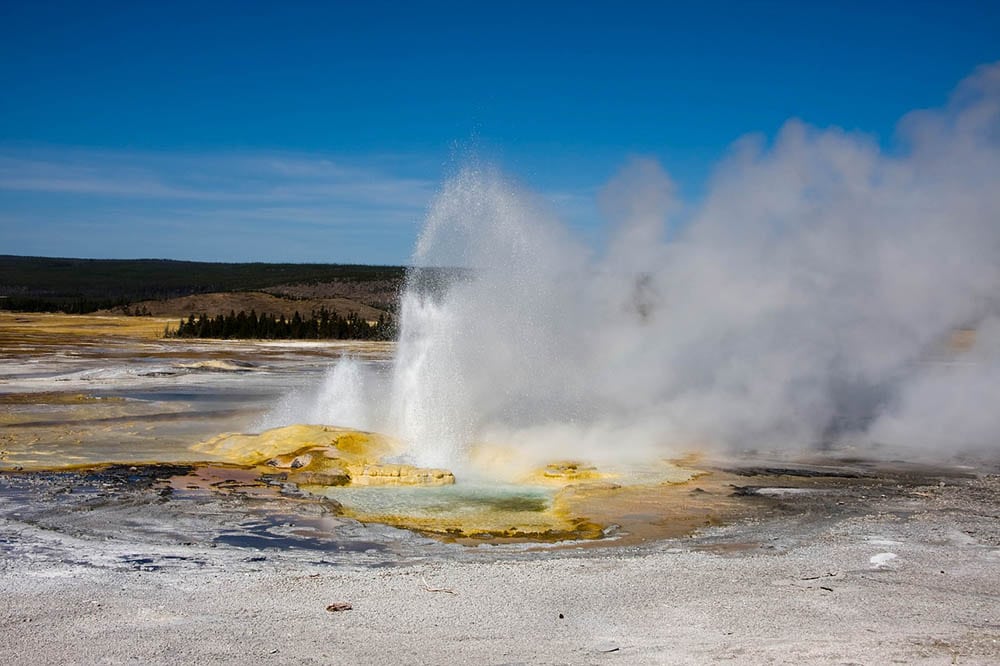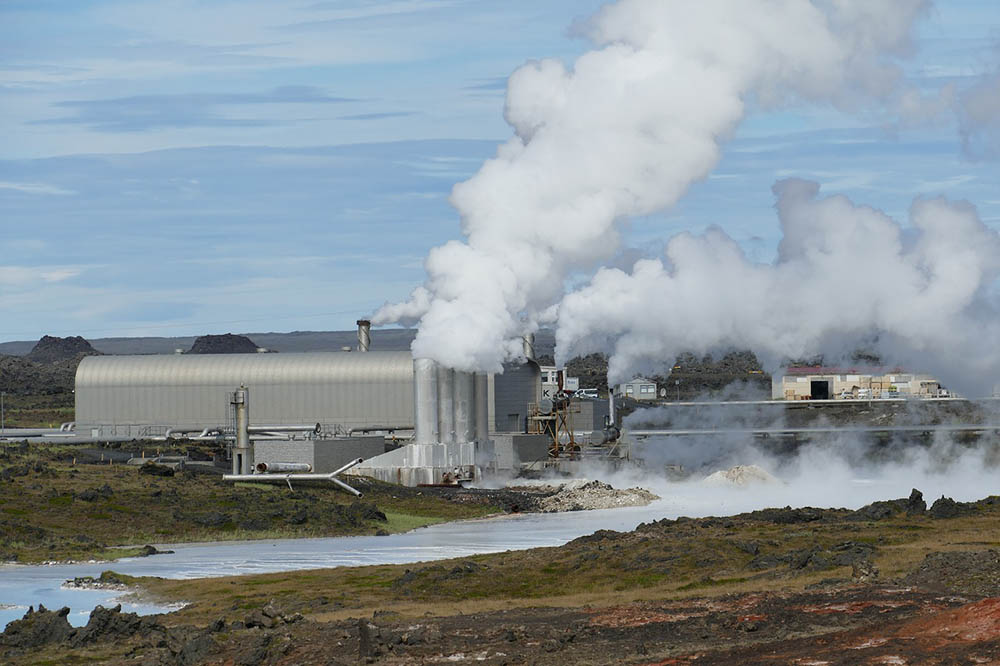What Is Geothermal Energy? Pros, Cons & Types
-
Pete Ortiz
- Last updated:

With climate change becoming more apparent every year, sustainability is a hot topic nowadays, especially in the energy sector. Energy production puts out more greenhouse gasses than any other industry, accounting for 35% of worldwide emissions.
Most people know the benefits and opportunities of “green” power. Sustainable alternatives like solar and wind have grown in popularity. But while these resources get the most press, another tiny part of the renewable resource equation holds some of the most intriguing opportunities for eco-friendly energy production—geothermal.
So what is geothermal energy, and why is it worth our consideration? We’ll explore the different types of geothermal energy and detail how we can start taking advantage of it today.
How Does Geothermal Energy Work?
At the center of the earth, a solid iron core reaches temperatures of 10,800°F, rivaling those on the sun’s surface. That heat conducts through the outer core and magma in the mantle, raising the temperature of the rocks and liquids below the earth’s surface. It’s common for heat to release from the ground in areas where two tectonic plates meet, such as geysers, hot springs, and volcanoes, because surface fissures give steam a conduit to escape.
Massive hot water reservoirs are available beneath the earth’s surface. On a large scale, utilities drill a mile or more into the ground to tap these sources. The hot water and steam they access can supply heating to a network or power generators that produce electricity. Yet, even several feet below the ground, a constant ground temperature lets individuals use geothermal energy to heat their homes.

What are the Different Types of Geothermal Energy?
Direct use of geothermal energy has gone on, in varying capacities, since the Paleolithic era. Native people used hot springs in North America over 10,000 years ago. The steaming waters were vital for spiritual and cultural purposes, cooking, bathing, and staying warm in colder months. Thousands of years later, those same religious and practical uses were critical parts of Greek and Roman culture.
The direct use of geothermal heat is more refined (and ubiquitous) today. We use it to heat commercial and residential spaces, such as houses and buildings, swimming pools, greenhouses, and fish ponds.
For direct-use geothermal energy, suppliers drill wells in geothermal reservoirs. Production facilities pump water into heat exchangers. The water transfers heat to another liquid that heats structures or any place that the piping takes it. The cooled water then goes back underground for reuse.
Direct-use systems only go about a mile deep at most, as they don’t need to go too far to take advantage of the heat difference. When we drill deeper (up to 2 miles down), we can access steam and liquid hot enough to supply heat and generate electricity.
Geothermal Power Plants
Geothermal power plants are utilities that pump hot liquid and steam energy from reservoirs to supply electricity to a load. The first geothermal power plant popped up in Italy in 1904 using “dry steam”, the most common kind of geothermal electrical generation in use today. Decades later, new technologies arose (flash steam and binary systems) that broadened the mining potential.

- Dry Steam: Dry steam is the most straightforward transfer of geothermal energy to electricity. Utilities drill 1–2 miles through thick caprock to reach fractured, permeable rock containing the hot liquid and steam reservoirs. The plant pumps steam through a long tube where it eventually meets a turbine. The steam spins the turbine, which powers a generator and creates electricity. The cooled liquid then moves to an injection well where it can re-enter the reservoir in a controlled fashion.
- Flash Steam: Flash steam technology extracts hydrothermal liquids at temperatures of 360°F or greater from underground reservoirs. The system pumps high-pressure hot water into a tank that drastically reduces the pressure. The sudden pressure drop causes the liquid to “flash”, or steam. That dry steam then powers the generator. Some flash steam systems use only one pressure tank, while others use multiple tanks. After the first tank steams the liquid, any remaining liquid can move to an even lower-pressure tank for further steaming. Depending on the setup and the heat of the initial water, it can then transfer to a third or even fourth tank for more energy production.
- Binary: A binary system doesn’t steam geothermal liquid but instead uses it to heat another fluid. The pipe pumps the hot geothermal liquid into a heat exchanger. Heat then transfers to a working fluid with a much lower boiling point, such as a refrigerant. The working fluid boils, and the dry steam powers the generator. Since the working fluid does not need to be as hot as water to give off vapor, binary systems produce energy easier than dry or flash steam plants. While those older models need geothermal liquid at temperatures of 360°F or higher, binary power plants only need liquid temperatures of 212°F to work. Plus, these types of power plants are closed-loop systems. That means they emit nothing into the environment except a minute amount of water vapor. And because they can use colder liquids than dry or flash steam facilities can use, we can use binary plants in more places.
- Enhanced Geothermal Systems: An enhanced geothermal system (EGS) involves an artificial reservoir. In this design, engineers fracture the subsurface rock to make it porous and permeable so they can create a well. They inject water into the reservoir where the rocks heat it and the continuous energy-generation loop can begin. EGS is in various conceptual stages around the globe. The plan is to test EGS sites in in-field locations near current conventional geothermal power plants. They can then expand to near-field use, but there’s no exact limit to how far it can go. According to the DOE, the U.S. could potentially increase its geothermal power generation to 40 times its current capacity, which would meet roughly 10% of the entire country’s electricity demand.

Residential Heat Pumps
On its most minor scale, geothermal energy works for residential and commercial heating. Only a few feet below the surface, the ground maintains a constant temperature of around 50°F–60°F. A geothermal heat pump can take advantage of relatively cold ground in the summer and warm ground in the winter to heat and cool a home or building.
Most geothermal heat pumps are closed-loop systems. A horizontal or vertical array of coiled tubing containing water or a water/antifreeze solution sits underground. It pulls heat from the ground and carries it to a heat pump during the winter, which further warms and distributes the air to the home. During the summer, the system works backward, depositing the heat from the house into the relatively cold ground.
Where Is It Used?
Although we can use heat pumps for heating almost anywhere, direct-use and geothermal power facilities can only work in select locations that have accessible hot liquid reservoirs.
Boise, ID was the first to use direct-use geothermal energy in a district heating system back in 1892. The system continues to expand today. The city supplies it to heat rec center pools, warm over 90 buildings, and even melt ice on sidewalks in the winter. There are 23 district heating systems like this in the U.S. scattered among California, Idaho, Colorado, South Dakota, Nevada, New Mexico, and Oregon.
Right now, geothermal energy for electricity generation is limited to areas along fault lines and around hot springs. In the United States, the world’s leading geothermal power producer, most of the geothermal power plants are on the West Coast. Located about 70 miles north of San Francisco, “The Geysers” is the country’s first and largest geothermal field. The field consists of 22 power plants that supply over 1,500MW of electricity. Other states with geothermal power plants include Hawaii, Idaho, Utah, Oregon, and New Mexico.

While the U.S. harnesses the most geothermal energy of any country, several nations around the globe are expanding their use. The second-largest producer, Indonesia, may even take the number one spot from the U.S. in the coming years.
Aside from the U.S. and Indonesia, other significant producers exist around the Ring of Fire. These include the Philippines, Japan, and New Zealand, where 17% of the nation’s power comes from geothermal energy. Meanwhile, Iceland, Italy, and Turkey are the leading European geothermal power producers. Today, 29 countries have geothermal capacities, and that number will only continue to grow.
Advantages of Geothermal Energy
The primary benefit of geothermal is that it delivers reliable, renewable energy. The system relies on only water and heat, both of which replenish through natural and artificial processes. As radioactive materials decay below the earth’s surface, they provide a continuous heat supply. And to refill the liquid reservoirs, plants pump the spent water supply back underground to reheat it.
Unlike other natural resources, geothermal energy has no downtime. The sun isn’t always shining, and the wind isn’t always blowing, but the subsurface is always hot. As a result, geothermal’s capacity factor—the energy capacity relative to the operating time—is higher than any other renewable resource. The capacity factor maintains a consistent average of roughly 76%, but newer power plants can exceed a 90% capacity factor.
Carbon-Free Energy
Like most renewable resources, geothermal energy is beneficial because it has low carbon emissions. Closed-loop systems (binary) have almost zero emissions.
Conventional plants only emit minute amounts of CO2 and sulfur dioxide. Compared to fossil fuel facilities, geothermal power and direct-use plants produce 99% less CO2. In Paris, France, their geothermal district heating system saves 120,000 tons of CO2 every year. Plus, the plants themselves take up much less space than solar plants or wind farms, further reducing their footprint.

Consumer Benefits
The potential of geothermal could also be good for energy costs. Unlike gas, geothermal energy isn’t prone to pricing fluctuations. The cost of direct-use heat can be up to 80% cheaper than heat from fossil fuels. And with a geothermal heat pump, you will use up to 65% less energy than you would use with a conventional heating and cooling system.
Disadvantages of Geothermal Energy
Whether it’s a power plant or a residential heat pump, geothermal has some of the highest initial costs of any energy option. The long-term savings on heat pumps are excellent, but the installation costs can run over $20,000.
Another issue that limits power production is its location dependence. Right now, power plants only operate near faults, fumaroles, and hot springs because the heat is accessible. EGS can expand the number of locations, but identifying areas without obvious reservoirs is expensive.
Along with cost and location, the optics of geothermal energy can be less than ideal. Although it’s a clean, renewable resource, fracking is an essential concern surrounding geothermal plants, especially in an EGS. For the most part, geothermal plants have less of an impact on the environment than the oil and gas industry in this regard. Still, there is the potential for them to affect seismic activity.

FAQs: Geothermal Energy
How Much of the Country’s Power Comes from Geothermal Energy?
Right now, the U.S. has power plants in seven states, generating roughly 16 billion kWh per year. It’s a lot of energy, but it’s only 0.4% of the country’s total electrical demand. The nation with the highest percentage of its total electricity coming from geothermal is Kenya. It produces approximately 46% of its electricity through geothermal plants.
Can We Run Out of Geothermal Energy?
The earth replenishes heat faster than we can use it, so there’s little worry that we won’t be able to use geothermal energy for the foreseeable future. The liquid part of the equation could run out though. Fortunately, most of the spent liquid can be recycled back underground. In Santa Rosa, CA, wastewater is sent to the Geysers to refill their reservoirs.
Conclusion
Geothermal energy is gaining steam, in more ways than one. It could hold countless benefits for the environment and consumers if it becomes more accessible. As the technology becomes popular among policymakers, the future is bright for this exciting power source.
Featured Image Credit: Piqsels
Contents


